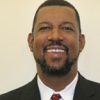For the past five years, the Central Illinois Workforce Board has provided the community with a state of the workforce report. The Talent Force 21: 2008 State of the Workforce Report represents the key issues emerging from an analysis of the central Illinois (Marshall, Peoria, Stark, Tazewell and Woodford counties) workforce. It focuses on the quality, quantity and alignment of the workforce to the current and emerging economy.
Highlights from this year’s report include a variety of accomplishments and continued challenges that are critical to develop the best talent force that distinguishes central Illinois as a great place to live and work in the 21st-century knowledge and innovation economy.
- Based on the number of freshmen who began high school in 2001, the Peoria MSA 2004 high school graduation rate was 83.7 percent, compared to 76.7 percent for the state and 74.7 percent for the nation (Editorial Projects in Education Research AMCenter, 2008). Although the region is graduating more students than the rest of the U.S., 16.3 percent of youth in central Illinois are not graduating from high school in four years.
- A learning community has a high and rising level of education among its working adults. Over the past five years, advanced educational attainment percentages have increased for central Illinois residents 25 years old and older. According to the 2000 Census and the 2006 American Community Survey, eight percent of the population had associate’s degrees in 2006, compared to seven percent in 2000; 17 percent had bachelor’s degrees in 2006, compared to 14 percent in 2000; and nine percent had graduate or professional degrees in 2006, compared to seven percent in 2000.
- Central Illinois will not escape a potential skilled-worker shortage. The total projected growth for skilled workers between the years 2002 to 2012 is 11,600. According to the Department of Commerce and Economic Opportunity, the 2000 to 2010 projected workforce growth (16- to 64-year-olds) is 4,702. Assuming all of these workers are skilled workers, the region still faces a potential skilled-worker shortage of over 6,800 individuals by 2012.
- As the region develops its workforce development strategy, it is important to align our human capital to the current and emerging economy. Although our economy will support numerous scientists, engineers and physicians, devoting our attention to only producing highly skilled scientific and technology workers will not meet the needs of the Peoria MSA business community. The U.S. Department of Labor projects that 85 percent of jobs will require training beyond high school, but not all will require four-year degrees. In fact, jobs that require two-year college degrees will increase by 40 percent over the next 15 years. iBi
Issue

